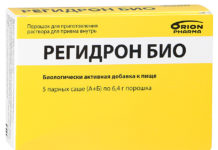Everyone is used to eating plant greens and undeservedly ignore parsley root. After all, it contains a lot of valuable substances that positively affect the body.
Material Content:
The chemical composition of parsley root
The composition of the plant is valuable and endowed with useful properties.
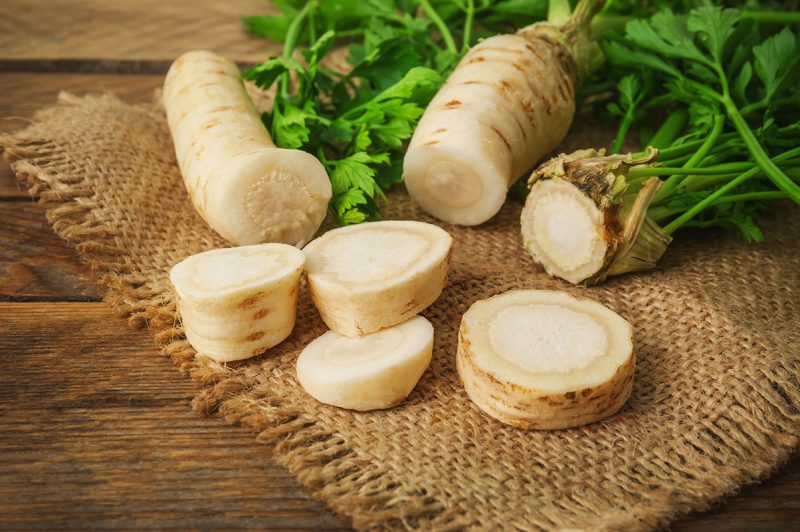
Contains:
- organic acids;
- iron;
- vitamins B (9,6,2,1,3);
- saturated fatty acids;
- monosaccharides;
- potassium;
- flavonoids (have an antioxidant effect);
- beta carotene;
- magnesium;
- selenium (endowed with anti-cancer properties);
- disaccharides;
- vitamins (PP, E, A, C);
- phosphorus;
- sodium;
- unsaturated fatty acids;
- starch;
- calcium.
Therapeutic and beneficial properties
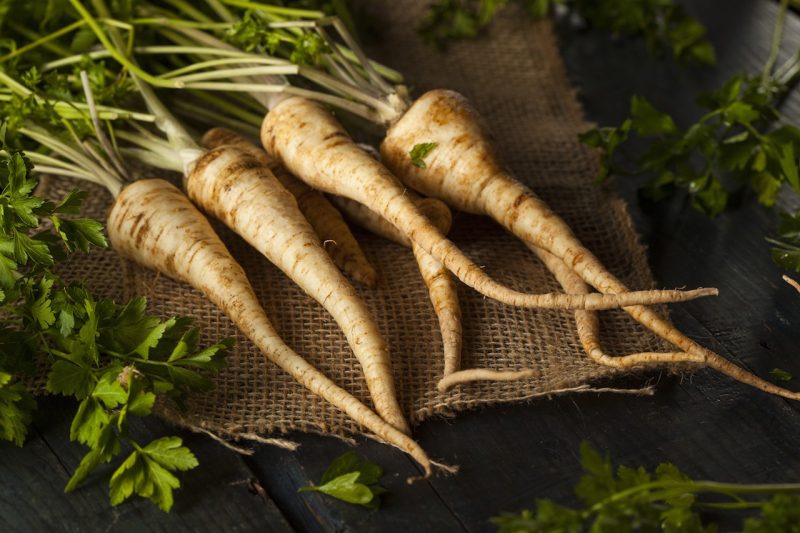
The root crop helps fight many diseases:
- helps to reduce the manifestations of allergic reactions;
- with constant use, blood sugar normalizes;
- a strong aphrodisiac helps treat prostatitis;
- helps fight heart and vascular diseases;
- relieves digestive problems;
- a strong diuretic, thereby cleanses the body and blood of toxins;
- used to preserve vision;
- used in the complex treatment of obesity;
- has a bactericidal effect. Due to this, it is used to treat inflammatory processes of the gums, tongue and oral mucosa;
- boosts immunity;
- tea from the root helps to defeat measles and scarlet fever;
- corrects liver function;
- an indispensable remedy for diseases of the genitourinary system;
- prophylactic against constipation;
- helps cure arthritis and rheumatism;
- eliminates pigmentation, bags and circles under the eyes, swelling.
What is useful for children
The healing properties apply not only to adults, but also to the smallest. The root crop is useful to include in the diet of children. It helps strengthen their immune system. Infusion from the root fights with measles and scarlet fever.
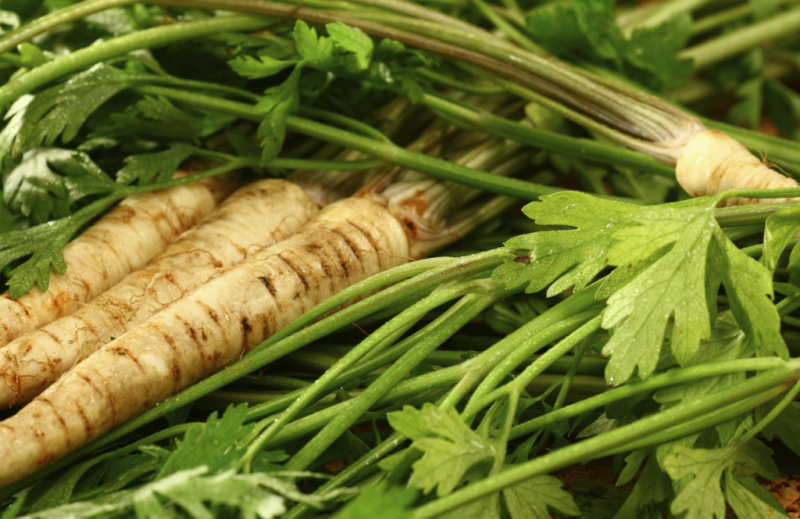
The broth is useful for chickenpox. Helps relieve uncomfortable sensations, increase the body's defenses and quickly recover from a disease.
Even for small children, an infusion of root vegetables helps to overcome indigestion.
Read also:the benefits of beets
The use of parsley root in folk medicine
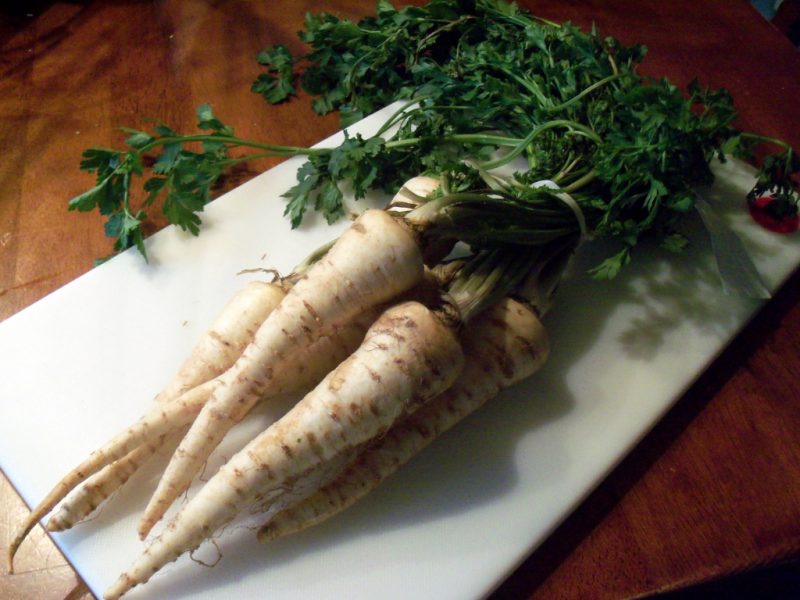
The root crop is used for fresh treatment. They also make juice from the plant. Dried root is suitable for the preparation of tinctures and decoctions.
- If dried roots (2 tbsp. Tablespoons) are poured with boiling water (480 ml) and insisted for a quarter of an hour, you get an infusion that has a beneficial effect on women. It will help bring the menstrual cycle back to normal. Regular use eliminates mood swings during menopause and saves you from pain on critical days.
- You can make juice from the roots and herbs. The ratio is 2: 1. This mixture is suitable for the prevention and treatment of heart disease. Juice will help lower blood pressure, cleanse blood vessels, and normalize heart rate.
- Infusion will help cleanse the liver. It will remove toxins, salts and toxins. To do this, grate the root (25 g) and add water (270 ml). Insist a day.
- For those who suffer from inflammation of the bladder or urolithiasis, tea from the root crop is suitable. It will increase urination, help to destroy stones and remove them from the body. Pour boiled water (250 ml) into chopped roots (20 g) and let stand for a quarter of an hour.
- Root infusion helps to reduce the acidity of the stomach. And with regular use, it normalizes the digestive tract. For cooking, the root (45 g) ground in a blender is poured with boiling water (320 ml). Then insist about an hour. It is recommended to use three times half an hour before a meal (80 ml).
- If you want to get a diuretic effect, remove excess fluid and eliminate swelling - prepare a decoction. To do this, boil the chopped root crop (50 g) for seven minutes in water (520 ml).
- In folk medicine, tincture treats prostatitis and cystitis.
Nutritionists recommend using the plant for weight loss. The root crop is perfectly absorbed, it helps to normalize the metabolism and remove excess fluid.
Cooking use
All over the world it is customary to use parsley as a spice.

Add it to:
- fish meals;
- side dishes;
- meat dishes;
- soups.
In crushed form they are added to stew and to a wide variety of sauces. Also, the plant is consumed in various dishes raw, fried and baked.
In cosmetology
Since ancient times, it is customary to use a plant to remove a rash. When brewed, they cleanse the skin and restore it after chickenpox, scarlet fever and measles. With regular use of the decoction, they help get rid of acne and acne.

Juice and root-based masks are used as a bleaching agent for freckles and pigmentation. Helps to improve complexion, and hide acne marks. The broth prevents hair loss, eliminates dandruff.
Before using the root, be sure to test for allergic reactions. Apply the prepared mixture to inconspicuous skin for a quarter of an hour. If redness, discomfort does not occur, then you can safely use the root for the procedures.
If you want to smooth, nourish and tighten your skin, we recommend preparing a mask.
Ingredients:
- olive oil - 2 tbsp. spoons;
- parsley - 20 g (root);
- yolk - 2 pcs.
Cooking:
- Grind the roots. Pour in the yolks. Mix.
- Add oil and stir.
- Cleanse your face, and apply the mixture. Soak for a quarter of an hour. Rinse.
If you regularly apply the mask, you can eliminate pigmentation and freckles.
Parsley root winter harvest
In the first year of life, the roots are harvested in the fall.In the second year of growth, harvesting is carried out only during the warm period.
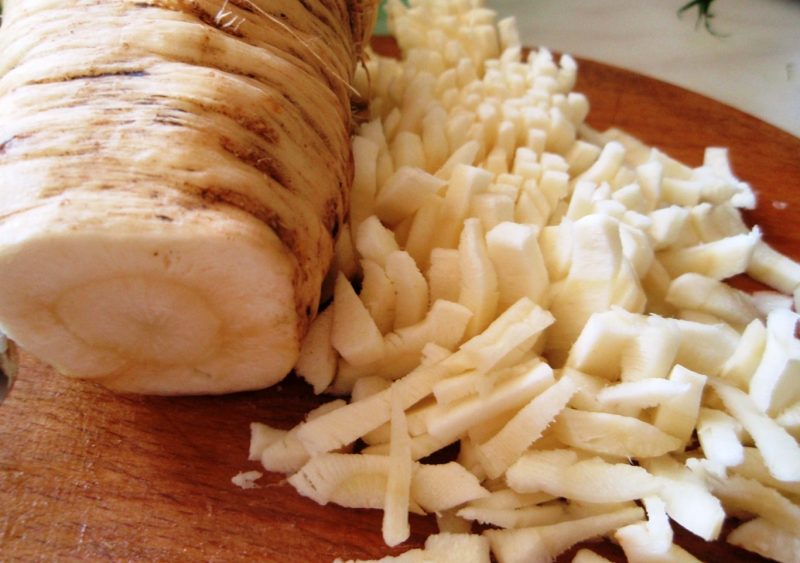
With self-cultivation of root crops should:
- dig up a plant;
- cut the tops;
- Rinse.
Store in the winter can be fresh in the basement or dried. Dried in an oven (40 degrees), suspended on a fishing line or use a heat dryer. When harvesting by any of these methods, parsley retains its properties for two years.
Ground roots can be stored in the freezer until the next season.
Another delicious winter harvesting method is pickled root crops.
Ingredients:
- vinegar - 100 ml (9%);
- parsley roots - 550 g;
- water - 550 ml;
- sugar - 55 g;
- garlic - 5 cloves;
- salt - 50 g;
- Lavrushka - 2 leaves.
Cooking:
- Freshly scooped roots are best suited for harvesting. Clean and then grate them. You can beat in a blender.
- To boil water. Sprinkle with salt. Sweeten. Pour vinegar. Stir until the added products are completely dissolved.
- Pour the chopped roots. Place peeled garlic cloves and lavrushka. Roll up.
Contraindications
In addition to all these positive qualities, attention should be paid to the negative impact on the body.
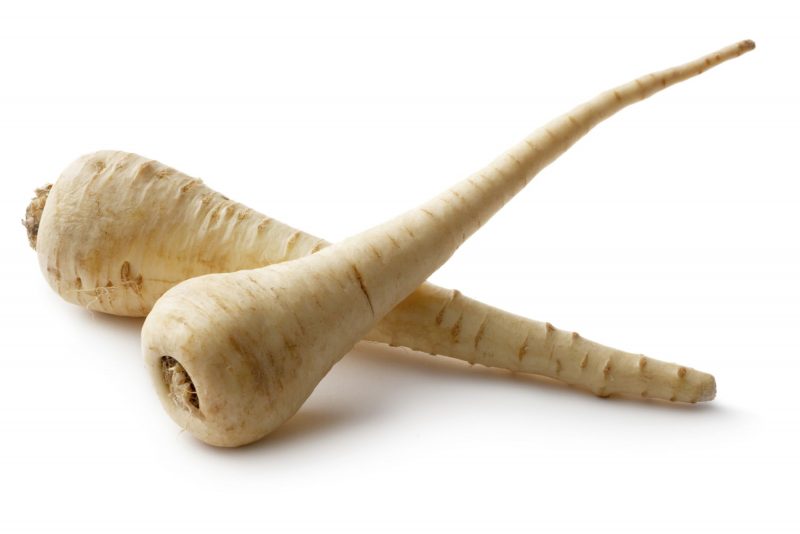
Do not use:
- with stomach ulcers and jade;
- with individual intolerance;
- during lactation;
- with epilepsy;
- pregnant
- with exacerbations of cystitis;
- with impaired calcium metabolism.
You can not abuse root crops. With increased overeating, nausea, headache, general malaise, and weakness will appear. You always need to know the measure.







